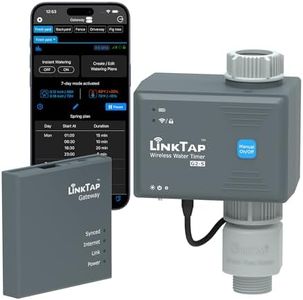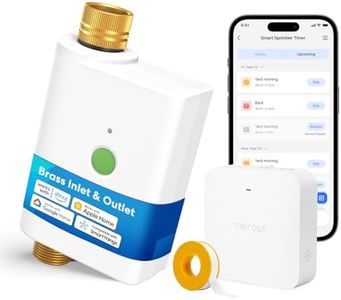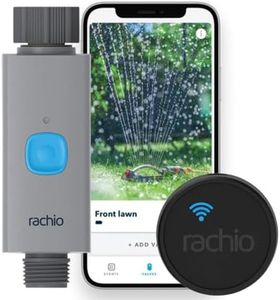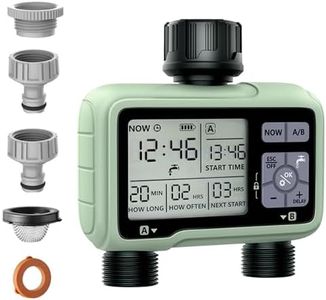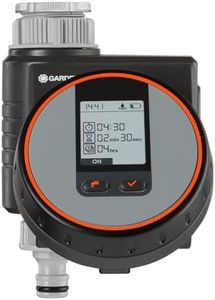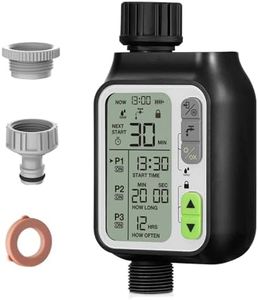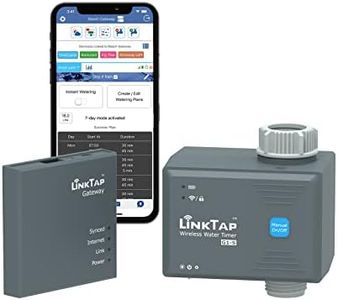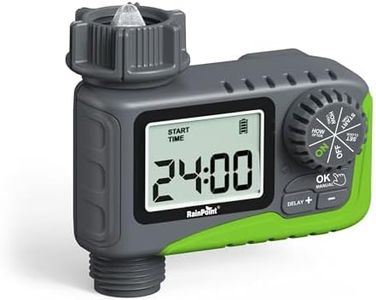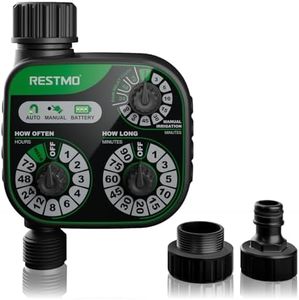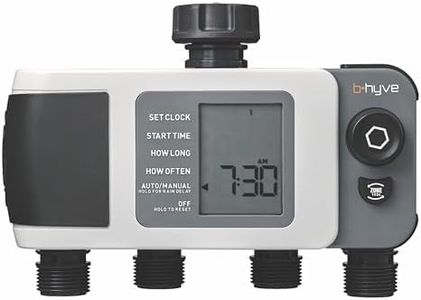We Use CookiesWe use cookies to enhance the security, performance,
functionality and for analytical and promotional activities. By continuing to browse this site you
are agreeing to our privacy policy
10 Best Hose Timers
From leading brands and best sellers available on the web.Buying Guide for the Best Hose Timers
Choosing the right hose timer can make watering your garden or lawn much easier and more efficient. To find the best fit, start with a clear idea of how often and how long you want to water, the number of areas you need to control, and whether you want to automate everything or prefer some manual flexibility. A great hose timer will help you save water, keep your plants healthy, and free up your time.Number of Zones/OutletsThis spec tells you how many different hoses or sections you can control separately with a single timer. It is important because if you have multiple areas in your yard or garden that need watering at different times or durations, you'll need more zones. Basic models typically handle a single zone, perfect for simple setups, while more advanced options can manage two, four, or even more zones. Choose a timer with enough zones to match the separate watering areas you have, ensuring each section gets the care it needs.
Programming OptionsProgramming options refer to how flexible and detailed you can set the watering schedule. This is important if you want precise control over when and how long your plants are watered, especially if you have specific needs due to climate or plant types. Some timers offer very basic daily or every-few-days schedules, while others let you pick specific days, start times, and run durations. Think about how hands-off you want to be and the needs of your plants; more flexibility is helpful if your garden is large or diverse, while simple programs are great for low-maintenance areas.
Manual Watering FunctionA manual watering function allows you to turn on the water without disrupting the automatic schedule. This is important if you ever need to give plants a little extra water, fill a pool, or use the hose for other tasks. Some timers make this easy with a button or dial, while others might require adjustments to the program. If you often need to water outside of the regular schedule, look for a timer with a simple manual override.
Power SourceThe power source determines how the timer works—typically either batteries or solar power. This is important because it affects installation and ongoing use. Battery-powered timers are very common and easy to set up anywhere, but you'll need to remember to check and replace batteries. Solar-powered options are more hands-off in the long run and better for eco-conscious users, but they might need full sunlight to stay charged. Choose the power source that fits your garden's setup and your preference for maintenance.
Waterproofing and DurabilityThis refers to how well the timer can handle exposure to the elements, including rain, sun, and temperature changes. It's crucial because timers stay outside most of the time, and you want yours to last through the seasons. Some timers are built with basic water resistance, suitable for mild climates, while others are rugged and built to withstand harsher weather. Consider your local climate when assessing how much durability you need.
Ease of Installation and UseHow simple it is to set up and operate your timer matters, especially if you want to avoid frustration. Some timers have lots of buttons, screens, and features, while others are straightforward with a simple dial or knob. If you prefer something plug-and-play, look for intuitive controls and clear instructions—this will make the process smoother, especially for beginners.
